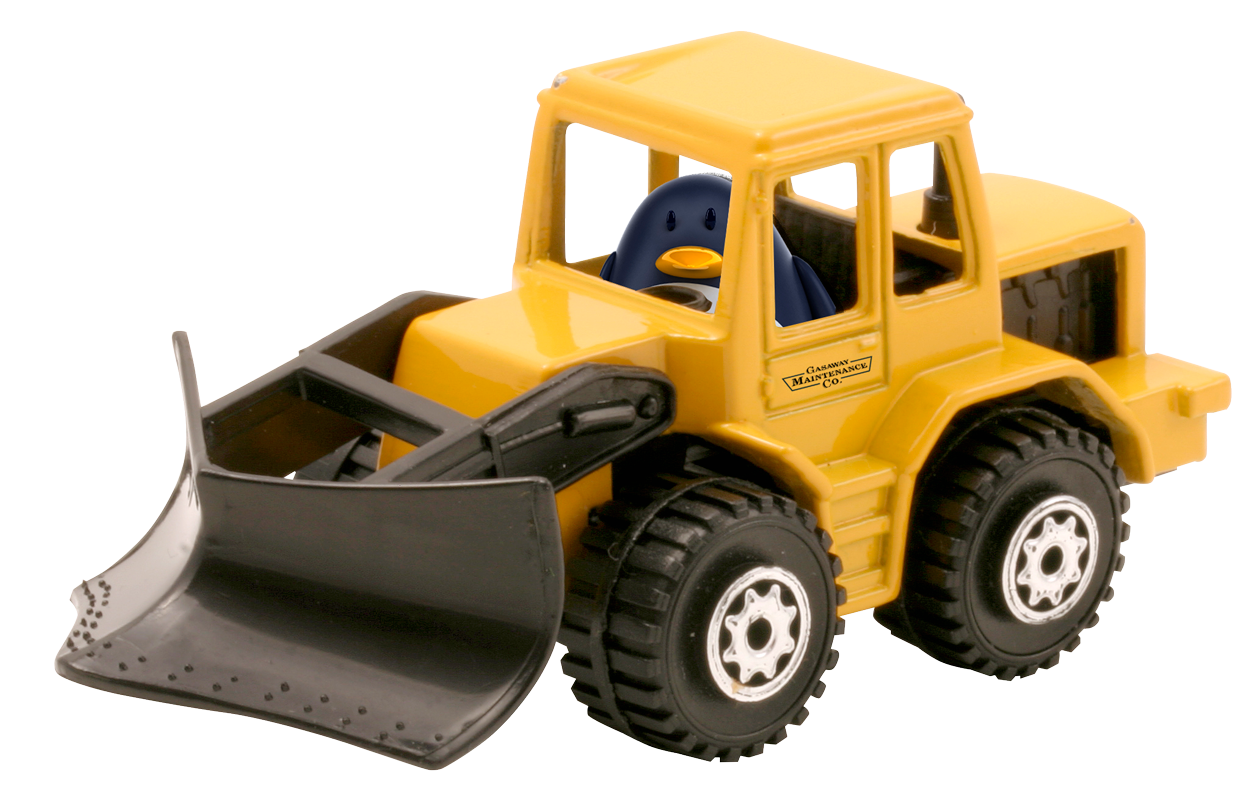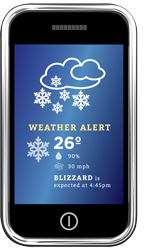PLOWSNOW.com sets the standard for commercial snow and ice management in the Chicagoland area. Our comprehensive service portfolio and proven business model power extraordinary results for our clients.

One of Chicagoland’s most respected snow and ice management service providers
FAQs:
Anti-Icing
Anti-icing is the application of chemicals and/or rock salt not only for de-icing, but also to remain on a surface and continue to delay the reformation of ice for a certain period of time, or prevent adhesion of ice to make mechanical removal easier.
Blizzard
A blizzard means that the following conditions are expected to prevail for a period of 3 hours or longer (one of both of listed conditions):
- Sustained wind or frequent gusts to 35 miles an hour or greater
- Considerable falling and/or blowing snow (i.e., reducing visibility frequently to less than a ¼ mile)
Blizzard Warning
Issued for winter storms with sustained or frequent winds of 35 mph or higher with considerable falling and/or blowing snow that frequently reduces visibility to 1/4 of a mile or less. These conditions are expected to prevail for a minimum of 3 hours.
Blowing Snow
Blowing snow is wind-driven snow that reduces surface visibility. Blowing snow can be falling snow or snow that has already accumulated but is picked up and blown by strong winds. Blowing snow is usually accompanied by drifting snow.
Blowing Snow Advisory
Issued when wind driven snow reduces surface visibility, possibly hampering traveling. Blowing snow may be falling snow, or snow that has already accumulated but is picked up and blown by strong winds.
Blustery
Same as Breezy; 15 to 25 mph winds.
Box Plow
A Box Plow is similar to a standard plow (see plow definition) but has sides on either side of the flat or curved piece of metal that boxes in snow while plowing.
Breezy
15 to 25 mph winds
Brooming
Mechanically sweeping snow and ice from an area using a large vehicle attachment.
Clear Ice
A thin coating of ice on terrestrial objects, caused by rain that freezes on impact. The ice is relatively transparent, as opposed to rime ice, because of large drop size, rapid accretion of liquid water, or slow dissipation of latent heat of fusion.
Commercial Properties
Any property having to do with business, i.e. office, industrial, manufacturing, medical, etc.
Deicer
Liquid or granular products that remove ice from roads, walkways and sidewalks when applied.
Density of Snow
In hydrologic terms, the ratio, expressed as a percentage, of the volume which a given quantity of snow would occupy if it were reduced to water, to the volume of the snow. When a snow sampler is used, it is the ratio expressed as percentage of the scale reading on the sampler to the length of the snow core or sample.
Diamond Dust
A fall of non-branched (snow crystals are branched) ice crystals in the form of needles, columns, or plates.
Drifting Snow
Drifting snow is an uneven distribution of snowfall/snow depth caused by strong surface winds. Drifting snow may occur during or after a snowfall. Drifting snow is usually associated with blowing snow.
Duration of Ice Cover
In hydrologic terms, the time from freeze-up to break-up of an ice cover.
Flurries
Snow flurries are an intermittent light snowfall of short duration (generally light snow showers) with no measurable accumulation.
Freeze
A freeze is when the surface air temperature is expected to be 32°F or below over a widespread area for a climatologically significant period of time. Use of the term is usually restricted to situations or to occasions when wind or other conditions prevent frost.
Freeze Warning
Issued during the growing season when surface temperatures are expected to drop below freezing over a large area for an extended period of time, regardless whether or not frost develops.
Freezing Drizzle
A drizzle that falls as a liquid but freezes into glaze or rime upon contact with the cold ground or surface structures.
Freezing Drizzle Advisory
Issued when freezing rain or freezing drizzle is forecast but a significant accumulation is not expected. However, even small amounts of freezing rain or freezing drizzle may cause significant travel problems.
Freezing Fog
A fog the droplets of which freeze upon contact with exposed objects and form a coating of rime and/or glaze.
Freezing Rain
Rain that falls as a liquid but freezes into glaze upon contact with the ground.
Freezing Rain Advisory
Issued when freezing rain or freezing drizzle is forecast but a significant accumulation is not expected. However, even small amounts of freezing rain or freezing drizzle may cause significant travel problems.
Freezing Spray
An accumulation of freezing water droplets on a vessel caused by some appropriate combination of cold water, wind, cold air temperature, and vessel movement.
Freezing Spray Advisory
An advisory for an accumulation of freezing water droplets at a rate of less than 2 centimeters (cm) per hour caused by some appropriate combination of cold water, wind, cold air temperature, and vessel movement.
Frost
Frost describes the formation of thin ice crystals on the ground or other surfaces in the form of scales, needles, feathers, or fans. Frost develops under conditions similar to dew, except the temperatures of the Earth’s surface and earthbound objects falls below 32°F. As with the term “freeze,” this condition is primarily significant during the growing season. If a frost period is sufficiently severe to end the growing season or delay its beginning, it is commonly referred to as a “killing frost.” Because frost is primarily an event that occurs as the result of radiational cooling, it frequently occurs with a thermometer level temperature in the mid-30s.
Frost Advisory
Issued during the growing season when widespread frost formation is expected over an extensive area. Surface temperatures are usually in the mid 30s Fahrenheit.
Frostbite
Human tissue damage caused by exposure to intense cold.
Frozen Dew
When liquid dew changes into tiny beads of ice. This occurs when dew forms and temperatures later drop below freezing.
Ground Blizzard Warning
When blizzard conditions are solely caused by blowing and drifting snow.
Hail
Showery precipitation in the form of irregular pellets or balls of ice more than 5 mm in diameter, falling from a cumulonimbus cloud.
Heavy Snow
This generally means…
- snowfall accumulating to 4″ or more in depth in 12 hours or less; or
- snowfall accumulating to 6″ or more in depth in 24 hours or less
In forecasts, snowfall amounts are expressed as a range of values, e.g., “8 to 12 inches.” However, in heavy snow situations where there is considerable uncertainty concerning the range of values, more appropriate phrases are used, such as “…up to 12 inches…” or alternatively “…8 inches or more…”.
Heavy Snow Warning
Issued by the National Weather Service when snowfall of 6 inches (15 cm) or more in 12 hours or 8 inches (20 cm) or more in 24 hours is imminent or occurring. These criteria are specific for the Midwest and may vary regionally.
Ice Crystals
A barely visible crystalline form of ice that has the shape of needles, columns or plates. Ice crystals are so small that they seem to be suspended in air. Ice crystals occur at very low temperatures in a stable atmosphere.
Ice Fog
A type of fog, composed of suspended particles of ice; partly ice crystals 20 to 100 micron in diameter, but chiefly (especially when dense) ice particles about 12-20 micron in diameter, formed by direct freezing of supercooled water droplets with little growth directly from the vapor. It occurs at very low temperatures, and usually in clear, calm weather in high latitudes.
Ice Pellets
Same as Sleet; defined as pellets of ice composed of frozen or mostly frozen raindrops or refrozen partially melted snowflakes. These pellets of ice usually bounce after hitting the ground or other hard surfaces. A Winter Storm Warning is issued for sleet or a combination of sleet and snow based on total accumulation which is locally defined by area.
Ice Storm
An ice storm is used to describe occasions when damaging accumulations of ice are expected during freezing rain situations. Significant accumulations of ice pull down trees and utility lines resulting in loss of power and communication. These accumulations of ice make walking and driving extremely dangerous. Significant ice accumulations are usually accumulations of ¼” or greater.
Ice Storm Warning
This product is issued by the National Weather Service when freezing rain produces a significant and possibly damaging accumulation of ice. The criteria for this warning varies from state to state, but typically will be issued any time more than 1/4″ of ice is expected to accumulate in an area.
Icing
A coating of ice on a solid object.
Lake Effect Snow
Snow showers that are created when cold, dry air passes over a large warmer lake, such as one of the Great Lakes, and picks up moisture and heat.
Lake Effect Snow Advisory
This product is issued by the National Weather Service when pure lake effect snow (this is where the snow is a direct result of lake effect snow and not because of a low pressure system) may pose a hazard or it is life threatening. The criteria for this advisory varies from area to area.
Lake Effect Snow Squall
A local, intense, narrow band of moderate to heavy snow squall that can extend long distances inland. It may persist for many hours. It may also be accompanied by strong, gusty, surface winds and possibly lightning. Accumulations can be 6 inches or more in 12 hours.
Lake Effect Snow Warning
This product is issued by the National Weather Service when pure lake effect snow (this is where the snow is a direct result of lake effect snow and not because of a synoptic storm or low pressure system) may pose a hazard or it is life threatening.
Lake Effect Storm
A fall or winter storm that produces heavy but localized precipitation as a result of temperature differences between the air over snow-covered ground and the air over the open waters of a lake.
Liquid Deicer Trucks
Specially designed tankers or straight trucks that spray liquid deicer on roadways and parking areas.
Mixed Precipitation
Any of the following combinations of freezing and frozen precipitation: snow and sleet, snow and freezing rain, or sleet alone. Rain may also be present.
Mostly Clear
When the 1/8th to 2/8ths of the sky is covered by with opaque (not transparent) clouds. Sometimes referred to as Mostly Sunny if this condition is present during daylight hours.
Mostly Cloudy
When the 6/8th to 7/8ths of the sky is covered by with opaque (not transparent) clouds. Same as Considerable Cloudiness.
Mostly Sunny
When the 1/8th to 2/8ths of the sky is covered by with opaque (not transparent) clouds Same as Mostly Clear, except only applicable during daylight hours.
Parking Deck
A multilevel structure designed for parking cars or other vehicles. The floors inside are connected by ramps, or may be sloped themselves forming a continuous interconnection between levels.
Plow
A flat or curved piece of metal that is attached to the front of a vehicle and used for clearing snow from a road, driveway, etc.
Plow Truck
a truck that has a snowplow attached
Powder Snow
Dry, loose, unconsolidated snow.
Power Broom
Large attachment for a Skid Steer that helps to remove snow utilizing rotating stiff metal bristles.
Road Grader
A large construction machine with a long blade used to clear snow and ice from large areas quickly.
Rock Salt
Salt that is in the form of large pieces or crystals – used to melt snow and keep roadways clear in the winter
Salt Truck
A specially designed truck with a large load capacity that spreads rock salt on the roads and parking areas in the winter time.
Semi-Trailer Truck
This is a combination of a truck with a semi-trailer designed to carry freight.
Skid Steer
A Skid Steer is a small, rigid-frame, engine-powered machine with lift arms used to attach a wide variety of labor-saving tools or attachments.
Snow
Precipitation in the form of ice crystals, mainly of intricately branched, hexagonal form and often agglomerated into snowflakes, formed directly from the freezing [deposition] of the water vapor in the air.
Snow Advisory
This product is issued by the National Weather Service when a low pressure system produces snow that may cause significant inconveniences, but do not meet warning criteria and if caution is not exercised could lead to life threatening situations. The advisory criteria varies from area to area. If the forecaster feels that it is warranted, he or she can issued it for amounts less than the minimum criteria. For example, it may be issued for the first snow of the season or when snow has not fallen in long while.
Snow Density
The mass of snow per unit volume which is equal to the water content of the snow divided by its depth.
Snow Depth
The combined total depth of both the old and new snow on the ground.
Snow Flurries
Snow flurries are an intermittent light snowfall of short duration (generally light snow showers) with no measurable accumulation (trace category).
Snow Grains
Precipitation consisting of white, opaque ice particles usually less than 1 mm in diameter.
Snow Pack
Same as Snowcover; the combined layers of snow and ice on the ground at any one time.
Snow Pellets
Precipitation, usually of brief duration, consisting of crisp, white, opaque ice particles, round or conical in shape and about 2 to 5 mm in diameter. Same as small hail.
Snow Shower
A snow shower is a short duration of moderate snowfall. Some accumulation is possible.
Snow Squall
A snow squall is an intense, but limited duration, period of moderate to heavy snowfall, accompanied by strong, gusty surface winds and possibly lightning (generally moderate to heavy snow showers). Snow accumulation may be significant.
Snowcover
Also known as Snow Pack; the combined layers of snow and ice on the ground at any one time.
Snowflake
An agglomeration of snow crystals falling as a unit.
Squall
A strong wind characterized by a sudden onset in which the wind speed increases at least 16 knots and is sustained at 22 knots or more for at least one minute. 2. In nautical use, a severe local storm considered as a whole, that is, winds and cloud mass and (if any) precipitation, thunder and lightning.
Wheel Loader
The Wheel Loader is heavy equipment for pushing, lifting and loading massive quantities of snow from large areas utilizing a bucket or a large box plow.
Wind Chill
Reference to the Wind Chill Factor; increased wind speeds accelerate heat loss from exposed skin, and the wind chill is a measure of this effect. No specific rules exist for determining when wind chill becomes dangerous. As a general rule, the threshold for potentially dangerous wind chill conditions is about -20°F.
Wind Chill Advisory
The National Weather Service issues this product when the wind chill could be life threatening if action is not taken. The criteria for this warning varies from state to state.
Wind Chill Factor
Increased wind speeds accelerate heat loss from exposed skin. No specific rules exist for determining when wind chill becomes dangerous. As a general rule, the threshold for potentially dangerous wind chill conditions is about -20°F.
Wind Chill Warning
The National Weather Service issues this product when the wind chill is life threatening. The criteria for this warning varies from state to state.
Winter Storm Warning
This product is issued by the National Weather Service when a winter storm is producing or is forecast to produce heavy snow or significant ice accumulations. The criteria for this warning can vary from place to place.
Winter Storm Watch
This product is issued by the National Weather Service when there is a potential for heavy snow or significant ice accumulations, usually at least 24 to 36 hours in advance. The criteria for this watch can vary from place to place.
Winter Weather Advisory
This product is issued by the National Weather Service when a low pressure system produces a combination of winter weather (snow, freezing rain, sleet, etc.) that present a hazard, but does not meet warning criteria.

WE DON’T JUST REMOVE SNOW AND ICE…

We Manage It!
Contact one of our snow and ice management consultants today!
630.985.1600
info@PLOWSNOW.com
PLOWSNOW.com a division of The Gasaway Maintenance Company | Romeoville, Illinois | 630.985.1600


